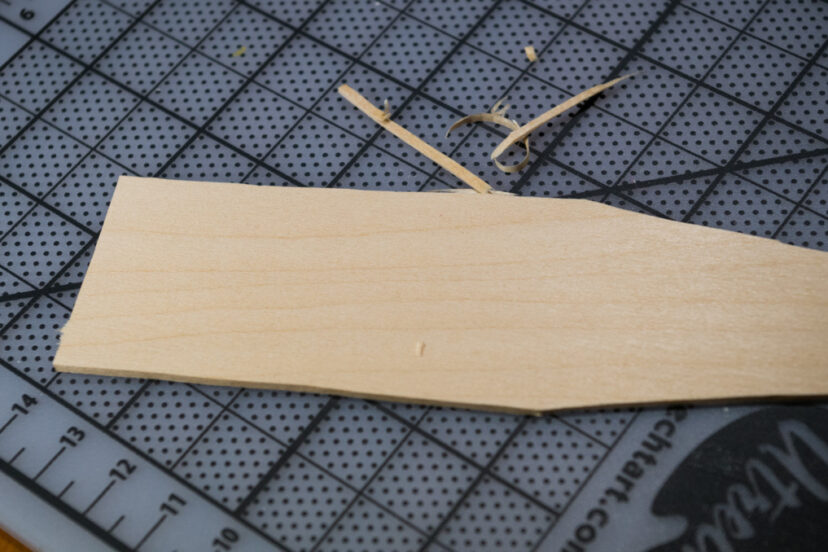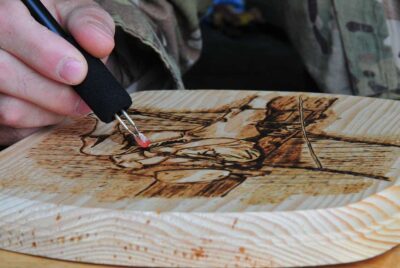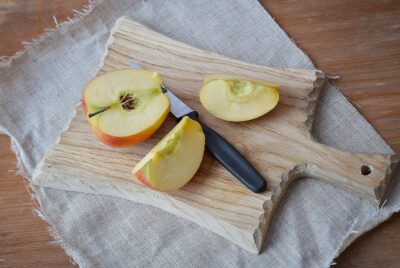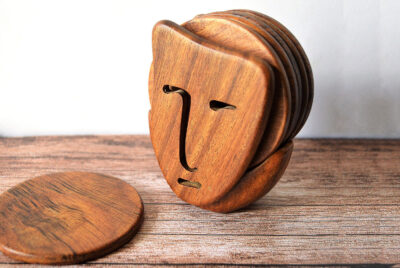The Art of Balsa Woodworking
Woodworking can seem intimidating at first—saws buzzing, wood dust flying, and stacks of lumber waiting to be tamed. But what if I told you there’s a type of wood that’s light, easy to shape, and forgiving to beginners? Welcome to the wonderful world of balsa woodworking!
Whether you’re crafting model airplanes, intricate sculptures, or simple home decor, balsa wood is the perfect gateway into the art of woodworking. Let’s explore why this featherweight champion is a favorite among hobbyists and how you can master it with ease.
What is Balsa Wood?
Balsa wood comes from the Ochroma pyramidale tree, mostly found in South America. It’s known for being one of the lightest and softest woods in the world, yet surprisingly strong for its weight.
Used in everything from model airplanes to architectural prototypes, balsa’s unique combination of flexibility and strength makes it an ideal material for creative projects. Plus, it’s easy to cut, sand, and glue—perfect for beginners and experts alike!
Why Balsa Wood is a Woodworker’s Best Friend
Lightweight But Strong
If you’ve ever picked up a piece of balsa wood, you know the first thing that comes to mind—“Wow, this is light!” It almost feels like holding a feather. But don’t let its airy weight fool you. Balsa may be lightweight, but it packs a surprising amount of strength for its size. Think of it like a hummingbird—tiny, delicate-looking, yet incredibly resilient. This unique balance of lightness and durability makes balsa perfect for projects that require structure without unnecessary weight. Model airplanes, boats, and architectural models all benefit from balsa’s ability to stay sturdy while keeping things light. So, if you want a material that’s strong enough to hold up but won’t weigh your project down, balsa is the way to go!
Easy to Work With
Woodworking can feel intimidating, especially when dealing with hardwoods that require power tools and a whole lot of muscle. But balsa? It’s as friendly as they come! It’s soft enough to cut with a simple craft knife, so you don’t need a fancy workshop or expensive tools to get started. No need to wrestle with stubborn wood or worry about splinters flying everywhere. Even if you’re new to woodworking, you’ll find that balsa makes the whole process feel smooth and stress-free. Plus, because it’s so easy to shape and sand, you can create detailed designs without breaking a sweat. Whether you’re carving intricate patterns, making precise cuts, or just having fun experimenting, balsa’s forgiving nature makes every project a joy.
Affordable and Accessible
Let’s be honest—hobbies can get expensive fast. But one of the best things about balsa woodworking is that it won’t drain your wallet. Unlike some specialty woods that cost a small fortune, balsa is budget-friendly and widely available. You don’t have to search high and low to find it, either. Most craft stores, online retailers, and woodworking supply shops carry it in various sizes and densities. Whether you’re looking for a thin sheet for a small craft or a thicker block for a sturdy project, chances are you’ll find what you need without breaking the bank. So, if you’re looking for an affordable way to dive into woodworking, balsa is the perfect place to start!
Getting Started with Balsa Woodworking
Starting a new hobby can feel overwhelming, but balsa woodworking is one of the easiest and most rewarding ways to dip your toes into crafting. You don’t need a huge collection of tools or years of experience to get going. All you really need are a few basic supplies, a little patience, and a willingness to have fun. One of the best things about balsa is how simple it is to work with. Unlike heavier woods that require saws and heavy-duty sanders, balsa can be shaped and assembled with just a handful of tools you probably already have at home. So, if you’ve been thinking about trying woodworking but don’t know where to start, balsa is a fantastic first step.
Must-Have Tools for Balsa Woodworking
Before you jump into your first project, let’s talk tools. The good news? You don’t need a fully equipped workshop! A few simple items will take you a long way with balsa. First, you’ll need a sharp craft knife (an X-Acto knife is a great choice) for precise cuts. If you plan to work with thicker pieces, a fine-toothed saw will make things easier. Next, grab some sandpaper—both medium and fine grit—because balsa sands like a dream, and smooth edges make all the difference. You’ll also want wood glue or CA glue to assemble your projects securely. Finally, a cutting mat is a smart addition to keep your workspace tidy and prevent damage to your table. With these essentials in hand, you’re all set to start creating!
Choosing the Right Type of Balsa Wood
Not all balsa wood is created equal. It comes in different densities, ranging from super light (4 pcf) to denser and more durable (20 pcf). Lighter balsa is great for projects where weight matters, like model airplanes, while denser balsa is better for load-bearing structures. The grain pattern also plays a role—straight-grained balsa is stronger and easier to cut, while irregular grains can add character but may be trickier to work with. When picking your wood, think about your project’s needs. Do you need something ultra-light? Go for the lower-density stuff. Want a bit more sturdiness? Opt for a higher-density piece. Choosing the right type of balsa ensures your project turns out just the way you want!
Basic Techniques for Working with Balsa Wood
Cutting Balsa Wood Like a Pro
Cutting balsa wood is all about precision and patience. Unlike tougher woods, balsa doesn’t fight back—it just needs a steady hand and the right technique. First, always use a sharp blade. A dull knife will crush the fibers instead of slicing cleanly, leading to rough edges. When making cuts, use gentle, even pressure** rather than forcing the blade through. If you’re working with a thicker piece, score the cut line first, then go over it with multiple light passes instead of one deep cut. This helps prevent splintering and ensures a smooth finish. Also, whenever possible, cut with the grain—it’s easier and results in neater edges. Here’s a short video on basic balsa wood cutting. With a little practice, you’ll be slicing through balsa like a pro in no time!
Shaping and Sanding for Smooth Result
Sanding balsa wood is one of the most satisfying parts of the process. Because it’s so soft, it smooths out easily without much effort. Start with medium-grit sandpaper to remove rough edges or shape the wood, then finish with a fine-grit for a polished look. If you’re working on curved areas, try wrapping sandpaper around a round object—like a pencil or dowel—to help shape the wood evenly. One thing to remember: balsa is delicate, so go easy! A heavy hand can remove too much material too quickly. Take your time, and you’ll end up with silky smooth pieces that are perfect for painting, staining, or just showing off their natural beauty.
Gluing and Assembling Your Project
Glue is the secret sauce that holds everything together in balsa woodworking. Since nails and screws are too heavy and can easily split the wood, wood glue or CA glue (super glue) is the way to go. Wood glue provides a strong bond but takes longer to dry, while CA glue sets almost instantly. If you need extra strength, reinforce joints with small balsa pins or gussets. Also, don’t rush the drying process! Hold or clamp pieces together for at least 10-15 minutes to make sure they stick properly. Here’s a good article on choosing the right glue. A little patience here goes a long way in ensuring your project stays sturdy for the long haul.
Fun Balsa Wood Projects to Try
Looking for inspiration? Try making a miniature airplane, a DIY picture frame, or a model bridge. These projects are perfect for beginners and teach valuable skills while being tons of fun. If you love decorating, try crafting balsa wood ornaments—they’re lightweight, easy to paint, and make fantastic gifts. Whether you go for something simple or challenge yourself with a more intricate design, there’s no shortage of possibilities with balsa wood.
Common Mistakes and How to Avoid Them
Everyone makes mistakes, but a few common ones can be easily avoided. Using a dull blade? That’s a recipe for splintered cuts—always keep your knife sharp. Applying too much pressure when cutting? That’s a quick way to crush the wood. Go slow, take light passes, and let the blade do the work. Skipping sanding? Big mistake! Smoothing out your project gives it a professional look. And finally, rushing the glue-drying process? Patience is key—let it set fully to ensure strong joints. A little care and attention go a long way!
Conclusion: Let Your Creativity Soar!
Balsa woodworking is an absolute joy—it’s light, easy to work with, and perfect for all skill levels. Whether you’re crafting models, home decor, or just experimenting with new ideas, balsa opens up endless possibilities. So grab your tools, let your imagination run wild, and start creating. Who knows? Your next masterpiece could be just a few cuts and glue drops away!
FAQs
- Can I stain or paint balsa wood?
Yes! Just use a primer first, then apply acrylic or enamel paint for a smooth finish. - What’s the best way to cut balsa wood cleanly?
Use a sharp craft knife and make multiple light passes instead of one deep cut. - Is balsa wood strong enough for furniture?
Not really—balsa is best for lightweight projects. For furniture, opt for sturdier woods. - Where can I buy balsa wood?
Check out craft stores, online retailers, or specialty woodworking shops. - Can balsa wood be glued easily?
Yes! Use wood glue for a strong hold or CA glue for quick assembly.




